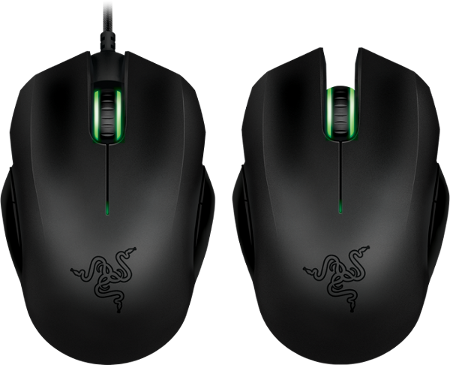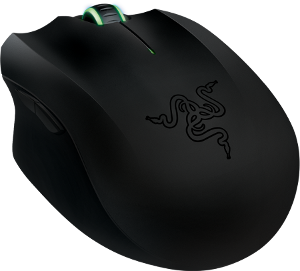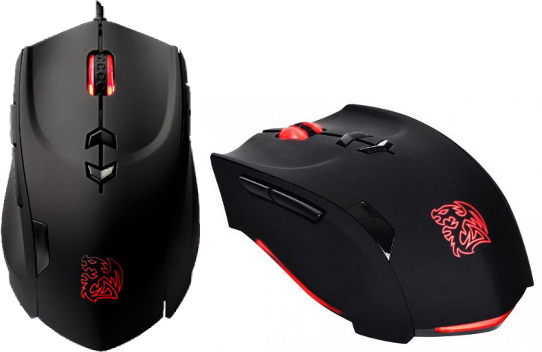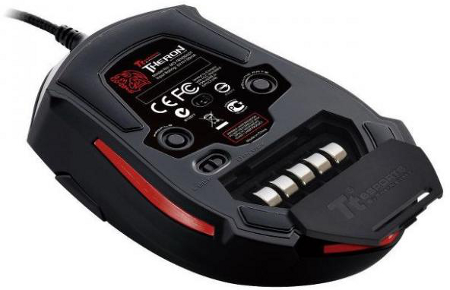Four Keyboards And Four Mice For LAN Party Gamers, Rounded-Up
We have four portable keyboards and a quartet of gaming mice that could turn heads at your next LAN party. We put the boards through a number of performance-oriented metrics, and handed the hardware off to some gamer friends for their opinions, too.
Razer Orochi And Thermaltake Theron
Why you can trust Tom's Hardware
Razer Orochi
The Orochi is arguably the oddest mouse in our comparison for its wired/wireless hybrid connectivity. At just 4,000 DPI, its maximum sensitivity is also a little lower than the other three mice. However, the Orachi’s polling rate is equal to the others when it's used in wired mode. Communicating wirelessly, maximum DPI drops to 2,000, and the mouse's polling rate is limited to 125 Hz (or 8 ms).
For our purposes, we're testing the mouse with its cord; our tests just wouldn't be fair otherwise.
Practically, the Orochi’s small form factor is great for traveling notebook users. You might even have enough room to use the mouse on your laptop's wrist rests if you're using a large enough system (something with a 15-inch screen should do the trick).
At $70, though, the Orochi is definitely a premium product for its small size.
Thermaltake Tt eSports Theron
Thermaltake has a long history of involvement in the LAN party scene. Perhaps best-known for its aftermarket coolers, power supplies, and cases, the peripheral space is a more recent aspiration.
On paper, the Theron is very similar to the G500. It’s a palm-grip, laser-sensor mouse, with adjustable resolution. However, the Theron’s shape is different enough that it feels completely different. Overall, it’s a bit larger and heavier than any other mouse in this round-up. And, as a result, it might be a better option if you have larger-than-average hands. Our sole concern is that the grip we needed to control this mouse sometimes caused us to accidentally hit the DPI adjustment buttons.
Thermaltake's Theron has customizable lighting on the top, sides, and scroll wheel. While purely cosmetic, the added bling is often popular at LAN parties, and it complements the LEDs typical of modern gaming rigs. Priced at $70, the Theron is right in line with the other mice we're reviewing.
Current page: Razer Orochi And Thermaltake Theron
Prev Page Logitech G500 And G9x Next Page Evaluating Mice: DPI And Polling RateGet Tom's Hardware's best news and in-depth reviews, straight to your inbox.
-
atavax i wonder at what dpi's they tested acceleration. It was my understanding that a lot of mice have acceleration issues at different dpi's. I have seen multiple sources that say the G9 has negative acceleration at low sensitivities.Reply -
Trewyy G9x now down to $55 on Newegg :) I should mention that it was a good review, as always!Reply
http://www.newegg.com/Product/Product.aspx?Item=N82E16826104261 -
ShadyHamster ReplyFive programmable buttons near the thumb rest, a mechanical button below the scroll wheel, and a battery indicator set the G500 apart from standard mice.
That should be DPI indicator not battery.
And whats up with pitting 1 mechanical keyboard up against 3 membrane keyboards? Before even reading the article i knew that the mechanical keyboard would be the clear winner, who would care about the loudness of the keys at a lan party, 99.9% of people would have headphones. -
Swordkd Before I bought my Razer mouse(Imperator 2012), I read reviews on newegg and decided to discount the issue that they seemed to be having. After a few months of use, the mice would start to double-click from a single "click". Sure enough, less than 6 months of light to moderate use, my mouse now suffers from this malady once out of every 20 clicks or so. Enough to annoy me.Reply
I will not recommend that brand mouse to anyone ever again. -
kitsunestarwind Logitech G9X is a fantastic mouse, been using mine since they first came out, never a complaint and has led to me having very sharp and accurate aim in games like BF3. Buy one it is worth it!Reply -
alidan das keyboard professionalReply
razor naga
that's my setup...
that said, sound and weight to press are not lower or higher is better... they are prefferences, i personally love the sound that a cherry blue makes and wish it was a bit louder because i make more sound on each key by bottoming them out apposed to activating the switch.
and weight, i hear it more often than not that for gaming heavier presses are better because its less likely to accidently activate.
now, impersonally just because of prior things i have had, i can never recommend razor... but at the same time i use a razor because i want that 12 key pad, and Logitech mouse is even smaller than the already small naga, and i cant get use to its bad form factor... its really the only razor anything i recommend just because there is no other competition that i can tell people to go with outside the small logitech and only if they have small hands.
also, i dont know if it was mentioned, but the razor keyboard from what i remember has such a strict policy, that if you remove a key cap, you void the warranty. there are story's of the s and j key switched, but because of razors warranty, they have to send it in and get it replaced that way, and its a razor product, you know it will fail... the keyboard doesn't have a mounting plate, so its more likely to fail than other mechanical keyboards because of the solder point stress before the keys naturally give out. -
blubbey 'The G500 was reported to be too long,'Reply
I know of course this is personal preference and everyone's different, but either their hands are small or mine are of reasonable size because I can almost cover the entire mouse (fingertips and base of my hand can just about hit the mouse mat at the same time). Unfortunately I don't have much else to compare it to, only random mice however it is larger than any I can remember, so I might just have larger than 'normal' hands.
Something else you might want to consider that others have found is that the scroll wheel is very 'light' to use. I'm indifferent about it seeing as I'm used to light scroll wheels but a few people have raised that point in reviews that I saw before buying it (~$45 on sale). I've also found that the weights are prety much useless, it's already quite a weighty mouse so an extra few grams really didn't matter for me.



